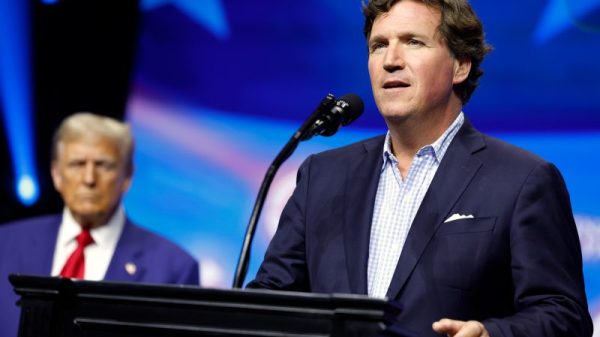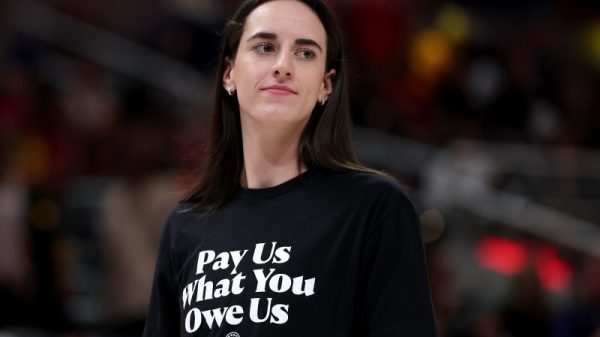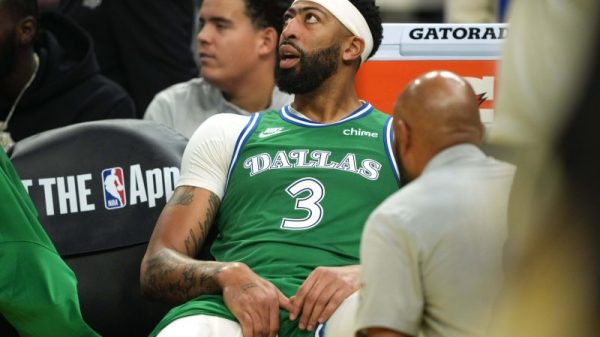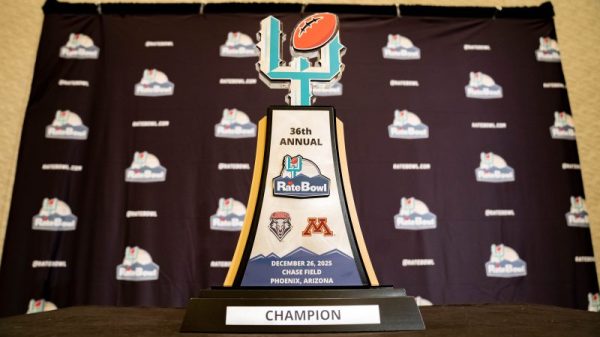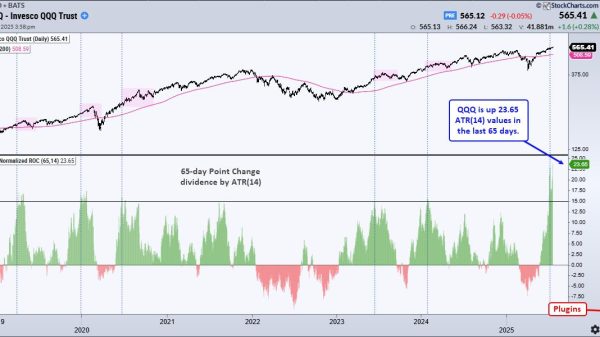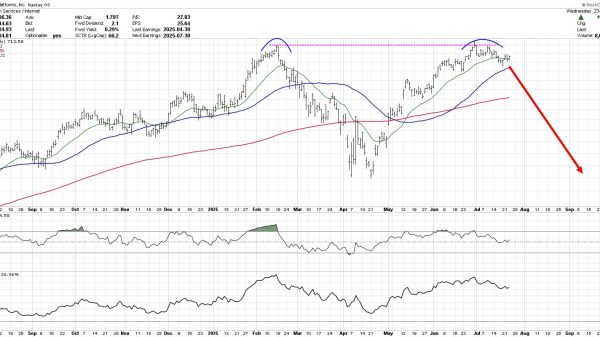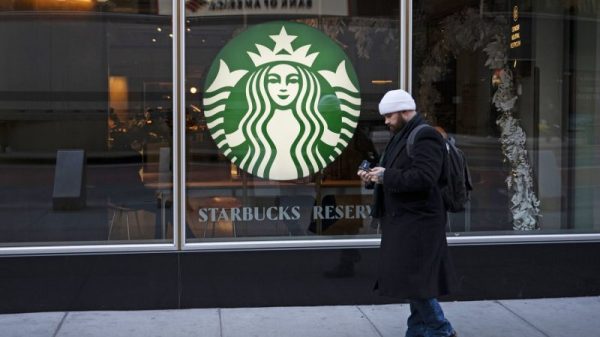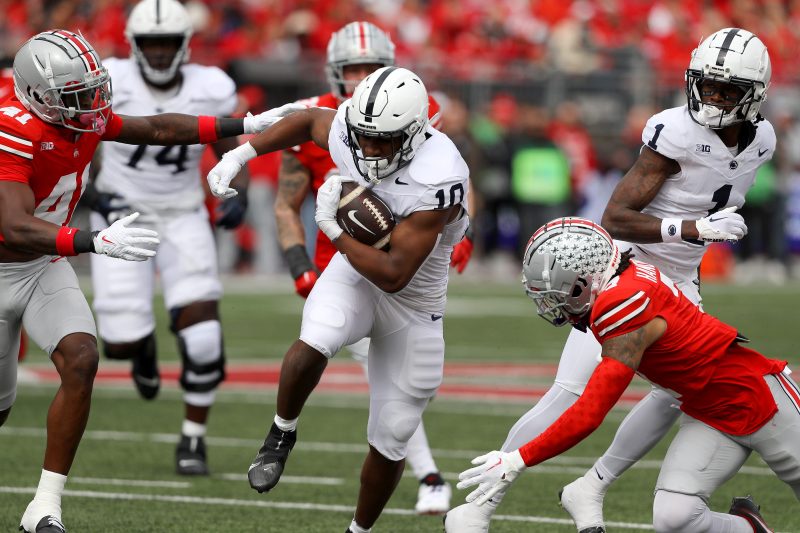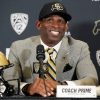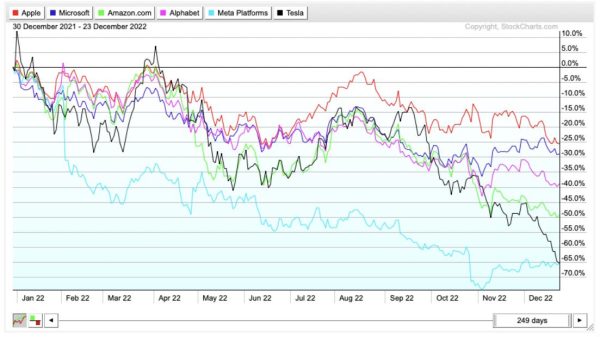Four years, four remarkable and unthinkable years of seismic change in college football, and nothing is sacred.
Not even Top 25 polls, which have become all but marginalized — save for a point of debate in the sport of arguing.
College football is now all about the top 12, or the 12 teams that make up the College Football Playoff. At least for 2025, before the inevitable 14-team format begins in 2026 with the advent of the new CFP contract.
Here’s you’re way-too-early CFP field for 2025 in seed order, ranked under the current format of highest-ranked four conference champions receiving first-round byes. Bookmark or download and preserve for future arguments.
Because that’s what this glorious sport is all about, anyway.
1. Penn State
What’s good: The experience of being there. We could talk about the talent returning on both sides of the ball, new defensive coordinator Jim Knowles and how Penn State’s roster matches up with anyone in college football.
But there’s intrinsic value in being there, doing that. Which, of course, Penn State hadn’t done in the playoff prior to last season. Think Michigan under Jim Harbaugh, which took two CFP trips to figure it out.
What’s not: Penn State’s history in big games under coach James Franklin. The ugly trend has to change. The Nittany Lions won two games in the playoff (SMU, Boise State) with everything on the line, but those weren’t heavyweights. Oregon (Sept.v27) and at Ohio State (Nov. 1) are season-defining games.
2. Georgia
What’s good: Coach Kirby Smart saw the problem and addressed it. That, as much as anything, is a critical growth step to his 10th season in Athens. Georgia receivers dropped more than 30 passes last season, so Smart signed significant additions from the transfer portal: Noah Thomas (Texas A&M) and Zachariah Branch (Southern California). Smart says the staff (and locker room) believes in QB Gunner Stockton, and that Georgia can win big games with him.
What’s not: The regression in 2024. There’s empirical evidence all over the place. From the most sacks given up by any Smart team at Georgia, to a run game that finished 15th in the SEC, to a defense that gave up the most points per game (20.6) since Smart’s first season in 2016. Have constant distractions off the field begun to take their toll, or was last year an outlier?
REPORT CARD: College football season grades for all 134 teams
LOOKING AHEAD: Our way-too-early college football Top 25 for 2025
3. Clemson
What’s good: Coach Dabo Swinney kept it from completely turning where it couldn’t be recovered — then convinced QB Cade Klubnik to return for one more run at the CFP. Bonus for 2025: Swinney finally added from the portal, and picked up impact edge Will Heldt (Purdue) and WR Tristan Smith (Southeast Missouri State).
What’s not: It took two seasons for offensive coordinator Garrett Riley to fix the offense. It can’t take that long for new defensive coordinator Tom Allen. There are elite pieces to build around (DE T.J. Parker, DT Peter Woods, LB Wade Woodaz), but there were too many times when the collective unit was out of position or took bad angles, or simply missed tackles.
4. Kansas State
What’s good: QB Avery Johnson. A white-knuckle ride in 2024 will even out in 2025. When he’s on, he’s as dangerous as any quarterback in college football. A Johnny Manziel-type of talent. He has to be more consistent, and K-State has to protect better.
What’s not: When does this team figure out how to win games it should? You don’t lose to Houston a week after beating rival Kansas, and don’t get blown away in the first half by Arizona State at home. The problem: it’s a pattern (Iowa State, 2023, 2021; Tulane, 2022; Texas, 2021), and overshadows and Big 12 championship and breakthrough wins under coach Chris Klieman. And derails CFP hopes.
UP AND DOWN: Winners and losers from college football signing day
5. Ohio State
What’s good: Finally winning it all. So many missed chances of the past mean nothing now. Now it’s a talented team playing loose and free and confident. A dangerous combination, considering the young talent all over the roster.
What’s not: A first-year starter at quarterback. Redshirt freshman Julian Sayin, a former five-star recruit, is next in line to take over. The last time a former five-star recruit was a first-year starter, Kyle McCord was run out of town after the 2023 season and a loss to Michigan.
6. Texas
What’s good: The buildout from coach Steve Sarkisian. Or the better way to say it: Texas truly is back. It’s plug and play now with elite recruitng classes (and a little help from the portal), and the expectations of winning it all are in full force with talented QB Arch Manning taking over.
What’s not: Slow starts and/or chasing points in big games. The regular-season loss to Georgia in 2024, Playoff losses to Washington (2023) and Ohio State (2024), and the loss to Oklahoma (2023).
7. LSU
What’s good: Coach Brian Kelly figured out you can’t win big in the SEC without a dominant defensive line. Key defensive line additions from the portal — Patrick Payton (Florida State), Jack Pyburn (Florida), Sydir Mitchell (Texas) — will quickly change things, and help the defense get off the field. Opponents converted 41 percent of third downs in 2024.
What’s not: Both starting tackles left early for the NFL. Will Campbell and Emery Jones Jr. were a strong backstop for QB Garrett Nussmeier, who constantly dealt with pressure from the middle three on the line. The Tigers will have four (and maybe five) new starters on the offensive line in 2025.
8. Oregon
What’s good: The Ducks are crushing high school recruiting and player development. The fourth year under coach Dan Lanning begins with a new quarterback (former five-star recruit Dante Moore), and plenty of talent on offense for one of the game’s best offensive coordinators (Will Stein).
What’s not: New starters in important roles on defense. Lanning built his resume at Georgia as a defensive coordinator who rotated young players along the front seven, and by always looking forward. Those rotation players at Oregon will move into key roles this fall, playing alongside star pass rusher Matayo Uiagalelei.
9. Oklahoma
What’s good: John Mateer, the difference between an ugly first season in the SEC, and a CFP run in 2025. The transfer quarterback from Washington State was the No. 1 player in the transfer portal, and is a dynamic dual threat (44 total TDs). The Sooners couldn’t get first downs in 2024; they’ll score in bunches with Mateer and transfer wideout Isaiah Stegna (Arkansas), and high-volume Championship Subdivision transfer receivers Keontez Lewis and Javonnie Gibson.
What’s not: The schedule is brutal. If we go by the 2024 model, it will be very difficult for a three-loss, non-Power Four conference champion to reach the CFP. Sooners get Mississippi and LSU in Norman, but have road trips to Alabama, Tennessee and South Carolina, and the Texas game in Dallas. Oklahoma also plays Michigan in Norman.
10. Brigham Young
What’s good: Quietly, confidently, coach Kalani Sitake has built a program with staying power. The Cougars return a majority of the group that won 11 games, and lost two by a combined nine points. Wins in either of those one-possession losses (Kansas, Arizona State), would’ve moved BYU into the Big 12 championship game with a CFP spot on the line.
What’s not: Turnovers. BYU had four giveaways in the two losses, including three interceptions from QB Jake Retzlaff — whose TD/INT ratio in games against Big 12 teams (13/9) was a problem. That must be fixed, especially with a fortunate schedule in 2025 that doesn’t include Kansas State and Arizona State.
11. Illinois
What’s good: After years of trying to recapture the plan and process at Wisconsin, Illini coach Bret Bielema is as close as he has been in nine years at Arkansas and Illinois. The Illini run with power, and all five starters return on the offense line. QB Luke Altmyer protects the ball, and stresses defenses with his willing toughness in the quarterback run game. The defense, too, is loaded.
What’s not: Taking the next step. Illinois won 10 games last season, and hasn’t had back-to-back double digit win seasons in the history of the program. The Illini hasn’t had back-to-back winning seasons since 2010-11. Needless to say, it’s going to take 10 wins to reach the CFP.
12. Boise State
What’s good: The culture. Star running back Ashton Jeanty was a once in a program player, but just a piece of the most consistent Group of Five program in college football. Coach Spencer Danielson’s quick rebuild will carry to 2025, with QB Maddox Madsen returning with four starting offensive linemen — including Kage Casey, a potential first round NFL draft pick in 2026.
What’s not: The same thing every season: one loss in the underrated Mountain West Conference, and the road to the CFP gets significantly tougher. There just isn’t much wiggle room for the one automatic qualifier spot. Boise State also plays at Notre Dame.
Matt Hayes is the senior national college football writer for USA TODAY Sports Network. Follow him on X at @MattHayesCFB.


